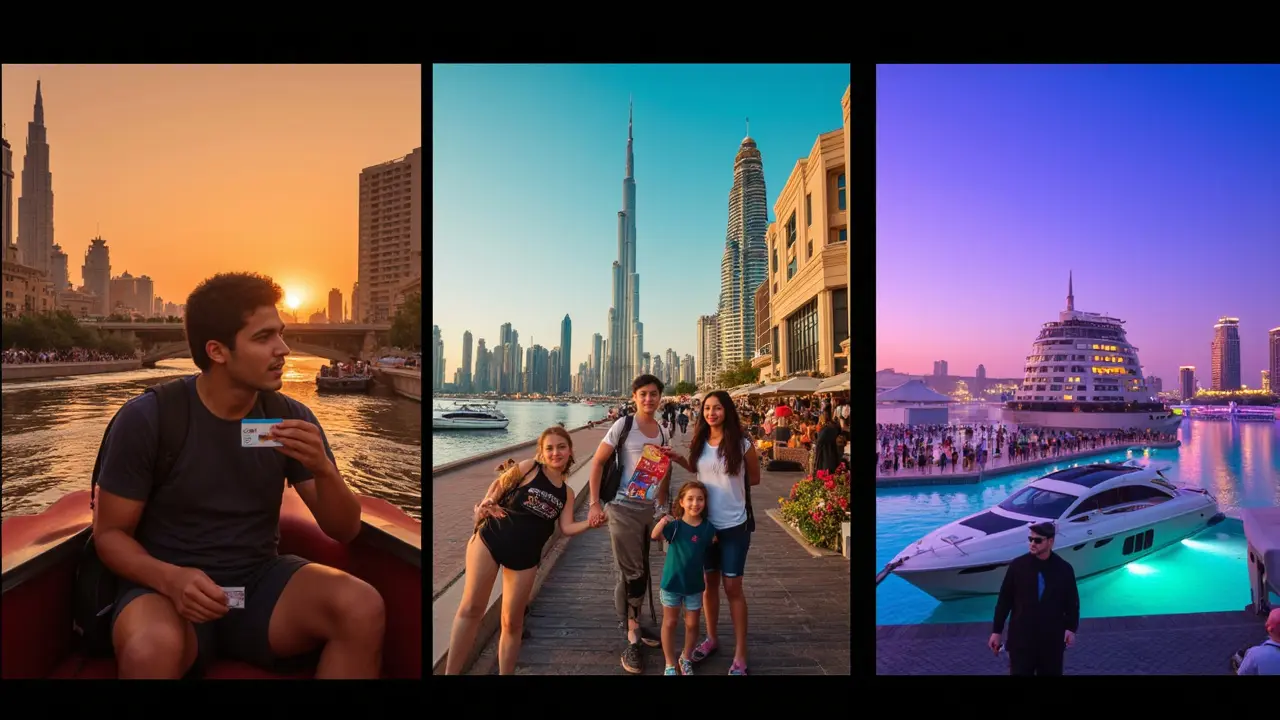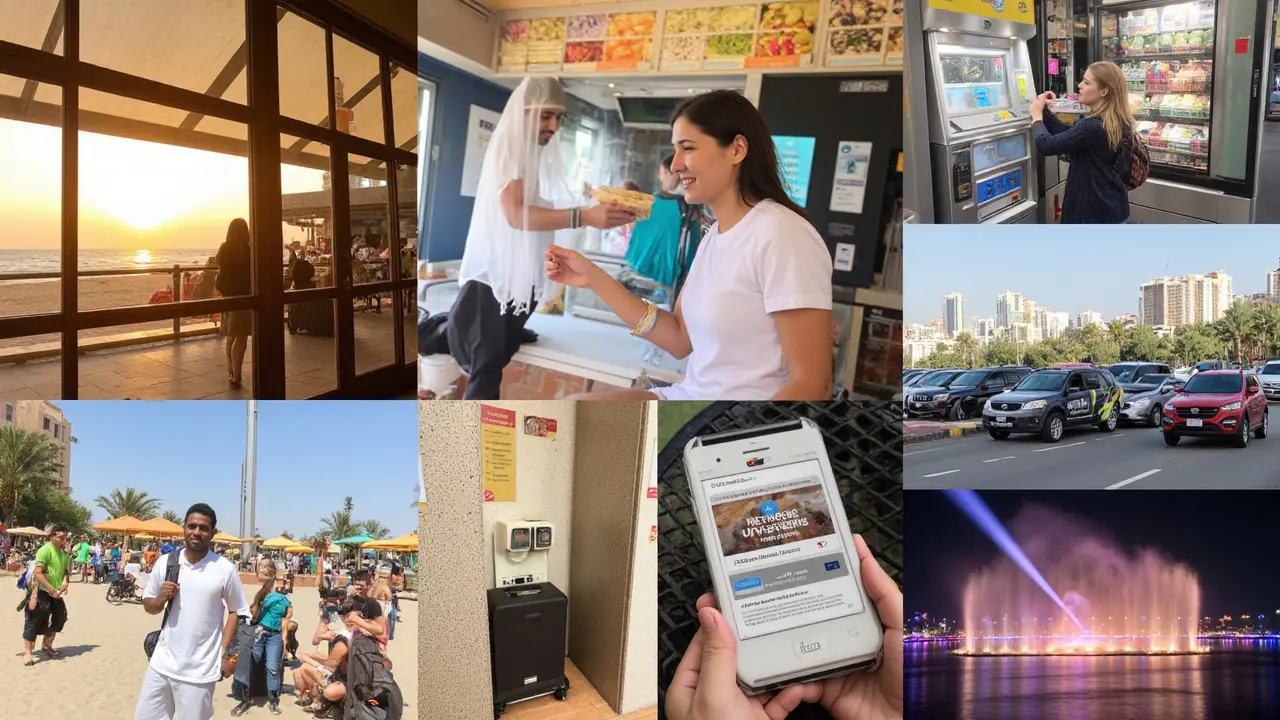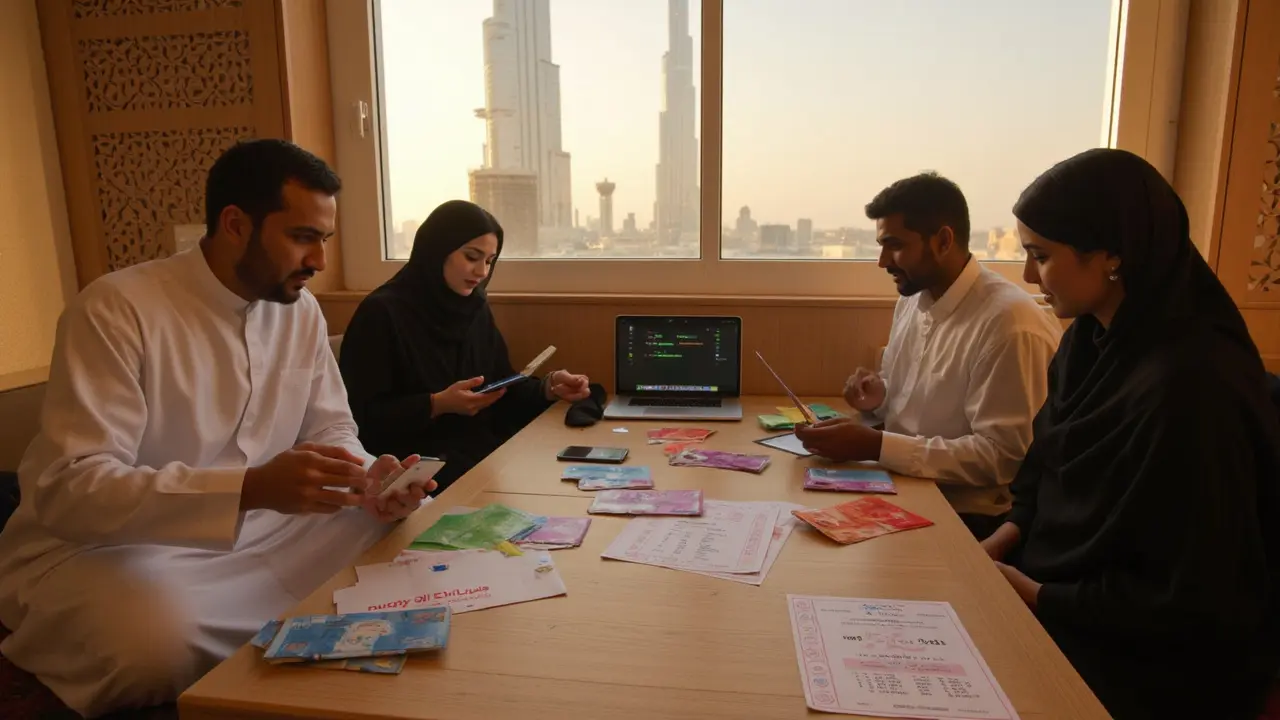You want a straight answer: how much cash do you need for a week in Dubai without guesswork or surprise fees. Here’s the short version. A typical 7-day Dubai trip in 2025 runs about $1,500 to $3,000 per person if you fly economy, stay mid-range, and do a few big attractions. Go lean and you can do it from about $900 to $1,600 excluding long-haul flights. Go big and luxury easily hits $5,000 to $10,000 per person. Your total swings on flights, hotel tier, and how often you book premium experiences.
What you likely want to do next: get a fast estimate, see a clean cost breakdown, pick the right budget tier, learn cheap vs peak months, avoid hidden fees like the Tourism Dirham and VAT, and grab a book-now plan without getting upsold.
Direct Answer, Key Points, and Fast Facts
7 day Dubai trip cost in 2025 depends on three levers: flights, hotel tier, and experiences. Quick figures below use USD with AED shown where useful. The UAE dirham is pegged at roughly AED 3.67 per USD.
- Direct answer: Most travelers spend $1,500 to $3,000 per person for 7 days including flights, hotel, food, transport, and a few headline attractions.
- Budget backpacker: $900 to $1,600 per person on the ground plus whatever your flight costs. If you score a cheap regional flight, total can land near $1,300 to $2,100.
- Luxury: $5,000 to $10,000 per person if you want 5-star hotels, premium dining, private tours, and business class flights.
- Flight ballpark roundtrip economy in 2025: Europe $350 to $800, North America $700 to $1,500, South Asia $200 to $500, Australia $900 to $1,500, Africa $400 to $900.
- Hotel per night: budget $35 to $80, mid-range $120 to $220, luxury $350 to $800+. Add Dubai’s Tourism Dirham fee per room per night and 5% VAT on most purchases.
Rule of thumb: Trip total = flight + hotel for 7 nights + daily spend x 7 + attractions + visas/insurance. Daily spend includes food, transit, and small extras.
- Daily spend guide: budget $25 to $45, mid-range $60 to $100, luxury $150 to $350.
- Peak price months: late December to March. Cheapest windows: May to September. Ramadan usually brings hotel promos and calmer crowds.
- Hidden fees checklist: Tourism Dirham AED 7 to 20 per room per night depending on hotel category, 5% VAT on most items, 10% service charge at many restaurants and hotels, dynamic pricing for attractions at peak times.

Full 7-Day Dubai Cost Guide: Breakdown, Options, Booking, Safety
Let’s unpack the full cost picture so you can build a realistic budget that matches how you want to travel. I’ve kept the numbers grounded in 2024-2025 price ranges from common booking engines, Dubai’s RTA for transit costs, the UAE Federal Tax Authority for VAT, and Dubai’s Department of Economy and Tourism for lodging fees.
Flights
- Europe to Dubai: $350 to $800 economy if booked 6 to 10 weeks out, more for Christmas and New Year.
- North America: $700 to $1,500 economy. West Coast tends to sit higher than East Coast.
- South Asia: $200 to $500 economy, frequent deals.
- Australia: $900 to $1,500 economy.
- Africa: $400 to $900 economy, depending on hub.
Booking tip: Aim for Tuesday to Thursday departures, watch 6 to 12 week windows, set alerts, and avoid flying the last weekend of December or during major school breaks if you want to keep costs sane.
Hotels and the Tourism Dirham
- Budget: $35 to $80 per room per night. Think hostels, guesthouses, or clean 2-3 star stays in Deira, Bur Dubai, or Al Barsha.
- Mid-range: $120 to $220 per night. Solid 3.5 to 4 stars in Business Bay, SZR, JLT, Marina, or Jumeirah Village.
- Luxury: $350 to $800+ per night. Beachfront, Palm Jumeirah, Downtown with Burj views, or iconic brands on the Creek.
Tourism Dirham fee: AED 7 to AED 20 per room per night based on hotel category, collected at check-in or check-out. VAT: 5% is added to most purchases. Many restaurants and hotels add a 10% service charge. Menu prices often include some fees, but not always, so check the bill.
Food and Drink
- Budget eater: $10 to $25 per day if you go heavy on cafeterias, shawarma, South Asian joints, and mall food courts.
- Mid-range: $35 to $70 per day with one nice sit-down meal and coffee or fresh juices.
- Luxury: $120 to $300 per day with fine dining, celebrity chefs, and cocktails at licensed venues.
Alcohol is only served in licensed venues and it is pricey. A beer is often $10 to $15, cocktails $15 to $25. Brunches are a thing and they add up fast.
Transport
- Metro and tram: Typical ride AED 3 to 8.5 based on zones. A day pass option keeps costs predictable for heavy days.
- Taxis: Metered, clean, everywhere. Expect AED 20 to 60 for most in-city hops depending on distance and traffic. Airport to Downtown often AED 50 to 80.
- Rideshare: Similar or slightly more than taxis at peak times.
Tip: Get a Nol card for the Metro, Tram, and buses. It is cashless and easy. Dubai’s Roads and Transport Authority publishes current fares and passes.
Attractions
- Burj Khalifa At The Top: roughly $50 to $120 depending on time and level. Prime sunset costs more.
- Dubai Frame: about $14.
- Museum of the Future: about $40.
- Desert safari with dinner: $40 to $95 group tours, more for private.
- Atlantis Aquaventure: about $85 for a day pass.
- Day trip to Abu Dhabi Grand Mosque and Louvre: $70 to $140 with transport.
Combo passes can help if you plan to hit 3 to 5 paid attractions in one week. Always compare the sum of individual tickets against the pass price and check blackout dates.
Visas, Insurance, and Connectivity
- Visa: Many nationalities enter visa-free or visa on arrival. If you need a tourist visa, budget $100 to $150 for 30-day single entry.
- Travel insurance: $25 to $60 for a week, higher if you want robust medical and cancellation cover.
- eSIM or SIM: $6 to $30 for 7 days depending on data. Airport kiosks, city shops, or an eSIM app work fine.
Three sample budgets for 7 nights
| Category | Budget Traveler | Mid-Range Traveler | Luxury Traveler |
|---|---|---|---|
| Flights | $250 to $800 regional or Europe deals | $600 to $1,200 typical long-haul economy | $2,500 to $5,000 business class |
| Hotel for 7 nights | $280 to $560 + Tourism Dirham | $840 to $1,540 + Tourism Dirham | $2,450 to $5,600 + Tourism Dirham |
| Food and drink | $80 to $175 | $245 to $490 | $840 to $2,100 |
| Transport | $25 to $60 | $45 to $120 | $120 to $300 |
| Attractions | $70 to $180 | $150 to $350 | $400 to $1,000 |
| Visa and insurance | $25 to $120 | $40 to $150 | $60 to $200 |
| Total per person | $730 to $1,895 plus flight if not included above | $1,920 to $3,850 including flight | $5,970 to $14,200 including business class |
Note: Ranges are intentionally wide to reflect seasonality and style choices. If you are coming from North America or Australia, expect to sit toward the higher end of the flight ranges.
Hotel vs Airbnb for a week in Dubai
| Factor | Hotel | Apartment Rental |
|---|---|---|
| Price | Budget to luxury, transparent fees | Often cheaper for groups, cleaning and platform fees can add up |
| Location | Abundant near Metro and attractions | Great variety, but check distance to Metro or beach |
| Amenities | Daily housekeeping, pools, concierge | More space and kitchen, fewer services |
| Flexibility | Easier cancellations | Stricter policies are common |
How to find the best prices fast
- Flights: Set price alerts 2 to 3 months out. Search nearby airports. Avoid peak dates and weekends if possible.
- Hotels: Check at least two aggregators plus the hotel’s site. Compare refundable vs non-refundable. Factor the Tourism Dirham in your total.
- Attractions: Book the big ones early for prime times. Compare individual ticket sums against combo passes.
- Transport: Grab a Nol card on arrival. If you will ride a lot in one day, consider a day pass to cap costs.
- Data: Install an eSIM before you fly or buy a local SIM in the city. Compare weekly data packs.
What a week can look like and what it costs each day
- Day 1: Downtown, Dubai Mall, fountains, Burj Khalifa. Spend: budget $30, mid-range $90, luxury $250+.
- Day 2: Old Dubai, Creek abra, souks, Dubai Frame. Spend: budget $20, mid-range $60, luxury $180.
- Day 3: Marina and JBR beach day. Spend: budget $25, mid-range $70, luxury $220.
- Day 4: Desert safari evening. Spend: budget $45, mid-range $90, luxury $250.
- Day 5: Museum of the Future and City Walk. Spend: budget $35, mid-range $80, luxury $220.
- Day 6: Palm and Aquaventure or The View. Spend: budget $30 to $85, mid-range $100 to $160, luxury $260+.
- Day 7: Free day for brunch or Abu Dhabi day trip. Spend: budget $20 to $70, mid-range $80 to $140, luxury $250+.
Safety and culture money-savers
- Dress modestly in old quarters and religious sites. Respect local customs, especially during Ramadan.
- Stick to licensed taxis or known rideshare apps. Taxis are metered and reliable.
- Tap water is treated, but many visitors buy bottled. If you drink tap water, use hotel kettles for tea or coffee.
- Use crosswalks and footbridges on multi-lane roads. Dubai traffic moves fast.
- Carry a credit card with no foreign transaction fees. Most places are cashless-friendly.
Quick budgeting formula and heuristics
- Hotel-first method: Lock your 7-night hotel cost, then give yourself a daily pot. Budget $35 to $45, mid-range $60 to $100, luxury $150 to $350. Add 2 to 3 paid attractions.
- Percent split method: 40% flights, 35% hotel, 15% food, 5% transport, 5% attractions. Adjust if you plan many paid attractions.
- When in doubt: Add 10% buffer for VAT, service charges, surge pricing, and last-minute cravings.

FAQs and Next Steps
FAQ: Your top questions answered
- What is the cheapest month for a 7-day Dubai trip? May to September for hotels and flights. It is hot, but indoor attractions are blissfully air-conditioned.
- Can I do a week in Dubai for $1,000 including flights? Possible from nearby regions with a flight under $300, hostel stays, and mostly free activities. From North America or Australia, that number is usually too tight.
- Do I need a car? Not for most visitors. The Metro, taxis, and rideshare cover 90% of trips. Rent a car only if you plan multiple far-flung day trips.
- How much for Burj Khalifa? Expect $50 to $120 per person depending on time and level. Sunset is pricier.
- Is tipping expected? Many places add a 10% service charge. If not, 5% to 10% is appreciated for good service.
- Can I drink alcohol? Yes, in licensed venues like hotels and certain restaurants. Prices are high.
- How much cash should I carry? $50 to $100 is plenty for small buys. Cards work almost everywhere.
- Is Dubai safe? Yes, it ranks high on global safety lists. Still, use normal city smarts.
- Any dress code costs or deposits? Not really. For mosques, modest dress is required and abayas may be provided for free or a small fee at certain sites.
Checklist: lock your 7-day budget in 10 minutes
- Pick your tier: budget, mid, or luxury.
- Plug in your flight quote.
- Multiply your nightly hotel rate by 7, add Tourism Dirham (AED 7 to 20 per night).
- Set a daily food and transit pot: budget $35, mid $80, luxury $220.
- Choose 2 to 4 paid attractions and add the ticket totals.
- Add $25 to $60 for insurance and $0 to $150 for visa if needed.
- Add 10% buffer. That’s your real number.
Next steps by traveler type
- Backpacker-solo: Book a bed in Deira or Bur Dubai, grab a Nol card, focus on Old Dubai, beaches, and free views. Pay for one headliner like Burj Khalifa.
- Couple-mid: Aim for a 4-star near a Metro stop. Pre-book Burj Khalifa, Museum of the Future, and a sunset desert safari. One splurge dinner with views.
- Family: Apartment hotel with kitchen saves on breakfast and snacks. Do Aquaventure on a cooler weekday, plan mall days midday, and keep taxis for late-night returns.
- Luxury: Pick a Palm or Downtown icon, private desert experience, chef-led dinners, and spa time. Consider business class for comfort and lounge access.
Risks and smart fixes
- Sticker shock on arrival: Build the Tourism Dirham and VAT into your budget from day one.
- Sold-out prime times: Reserve sunset slots for Burj Khalifa and popular Friday brunches early.
- Heat fatigue: Plan outdoor time early morning and late afternoon, keep indoor attractions midday.
- Data overage: Use Wi-Fi in hotels and malls, or buy a 7-day data pack and stick to it.
Ready to turn this into a plan you can book? Open your flight search, pick your hotel tier, list 3 must-do attractions, and run the quick formula. You will have a clear, bookable 7-day budget in under an hour.
